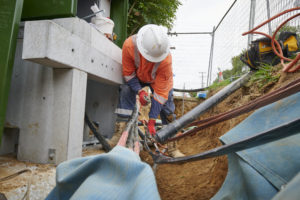Safety around our network
When you or a contractor are working around power lines and cables, there is a risk to your life and the surrounding environment. Whether you are digging, driving, or completing a DIY project, you and contractors need to be aware of the electrical surroundings to get the job done safely.
Check before you dig
Before beginning any digging, it is essential to check for any cables, pipes, or other utility assets below the area where you plan to dig. Digging includes any activity that disturbs or penetrates the ground, such as using shovels, excavators, hammer drills, directional drillers, and hydro excavators.
- Get the reference maps from the beforeUdig website. BeforeUdig lets you submit your plan, and they will provide you with free reference maps.
- Showing underground cable locations within hours of your submission.
- Mark out the locations given from the reference maps and identify potential hazards within the work site.
- Hand-dig the location to expose the cables to confirm where each cable is before you start work.
*Do not rely on finding buried marker tape, as it can shift over time. We generally lay cable at different depths, and ground conditions can readily change this. Expect the cable to be at any depth.
It’s important to note that an increasing number of independent asset location companies are now operating throughout New Zealand. Waipā Networks cannot endorse the quality or accuracy of the cable location work done by these firms and assumes no liability for any damages that arise as a result.
After you dig
To ensure safety in the future, once you have finished digging, remember to:
- Support and protect the exposed cable.
- The cable should not move. To avoid movement, the cable should be supported at one-metre distances.
- When placing the cable back underground, it must be filled with at least 200mm of sand that has been compacted by hand.
Digging around power poles
Do not dig within five metres of power poles. Digging within five metres of power poles could cause the pole to collapse.
We will provide guidance about whether it is safe to dig and, in some cases, provide recommendations on how to do it safely.
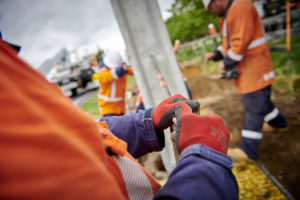
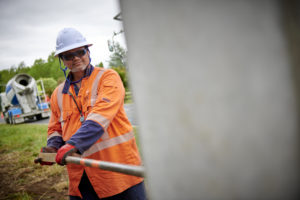
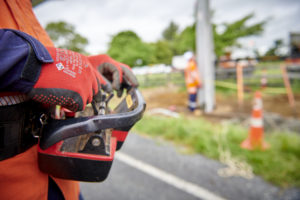
Working/travelling around powerlines and equipment
One of the most important ways to maintain safety is by keeping a safe distance from our network and the equipment.
You must be aware of the risks associated with our network, including the risk of electric shock, burns, and injury from falling objects. See our electrical safety page for more information.
If you have any safety concerns or want to report an incident, please call 0800 800 769 24 hours to assist.
Here are some key tips for maintaining safe distances around our network:
- If you work near our network or need to access our equipment, please contact us first for the necessary safety instructions.
- Be aware of overhead lines and stay at least four meters away from them.
- Keep a safe distance from transformers and other equipment. Please do not touch any equipment or attempt to repair it yourself.
- Always use the correct safety equipment near our network, including hard hats, safety glasses, and gloves.
- Only climb utility poles or attempt to access our equipment with authorisation and proper safety training.
- Around your property, ensure that anything that could blow into the powerlines is secured to a fixed asset, such as a post or something in the ground.
- Lower equipment when moving them around power lines
- If you are using extendable equipment, make sure that you have looked up and assessed where the power lines are before extending them.
- If you notice a tree within four metres of a power line, do not cut or prune it yourself. Call Waikato Tree Services on 0508 87 33 22.
Remember, safety is everyone’s responsibility. By working together and following our safety guidelines, we can ensure a safe and reliable network for our community.
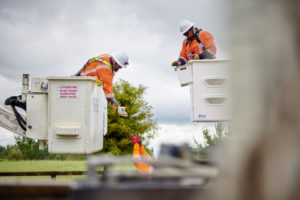
Close approach form
If you are planning to work near our network, please fill out the close approach form to ensure you carry out work safely. Our team will get back to you as soon as possible so you can begin work.
